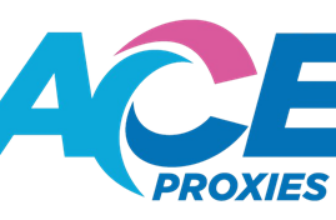
What Are The Advantages Of T1 Over DSL?
[ad_1]
Here’s the question many small to medium size businesses ponder… sometimes to the point of paralysis. “What are the advantages of a T1 are over DSL at the same bandwidth?”
The answer is really much simpler than one would think. The key word here though is… “think”.
Unless your major and only concern is cost, a T-1 will win hands down. A T-1 is going to be more reliable. The big plus is if it does go down, the SLA (Service Level Agreement) and QoS (Quality of Service) negotiated with the provider mandates a quick response (as in a few hours) to start fixing any T-1 issues. Whereas a DSL could go down for days and there is nothing you can do about it. With DSL there’s rarely any mandated response times for repairs.
Also a T-1 is usually more dedicated than DSL. For example the provider could have 200 customers or more out of one DSLAM… but the T-1 is all for you. You will therefore see less latency and bandwidth problems with your T-1 than you would with a DSL from the same provider. This may not be the case all over… but for most it is true.
Now here’s a few facts to further confuse you (hopefully not… but be forewarned).
The DSL cost at about 1.5M is not that much less than burstable T-1 service (sometimes referred to as Full T-1 “as you need it”). This may surprise you, but in the long run (and you’d be foolish to pay full price rather than taking a 36 month term reduction), in this particular situation SDSL may not be that much less expensive even than Full T-1 services. But… and this is a BIG but…. T-1 is the better choice on a straight internet cost/benefit analysis. (not to mention performance issues).
Let me explain…
Internet access (as in internet or data only) is the biggest waste of T-carrier bandwidth for businesses who are not teeny tiny ISP’s. The smart thing to do is take your total voice investment (monthly, installation, maintenance, hardware, etc.) and add it to your total internet/data investment. What you will find is that even if you need the full 1.544Mbps for internet/data, you will save thousands of dollars or more by fully integrating voice and data services.
Let me give you some examples of how you can do this:
1) Fiber optics. A very large infrastructure cost offset by a relatively small bandwidth usage cost means fiber pays for itself within a couple of years. No brainer – unless there’s no fiber to be found.
2) ADTS-E over T-3. Like T-1, DS-3 can also be purchased fractionally. Dedicating certain DS3 channels (1.544Mbps each) for voice and certain ones for data. Configured in this way, DS-3 is not going to be as expensive as you think, and you’ll have the advantage of cost/benefit by bundling voice/data and internet through one pipe.
3) ISDN-PRI. Don’t laugh, because I know what you’re thinking: ISDN???? But your typical ISDN line is ISDN-BRI (2B + D) giving 64k x 64k at a set kbps D channel for signaling. However, ISDN-PRI is technically understood as 23B + D. Meaning 23 B channels at 64k + one D channel at 64k for signal. With intelligent CPE, i.e. a brand new PBX, you can dynamically allocate bandwidth back and forth between voice and data channels as needed. So if your internet requires the entire 1.544Mbps (it probably won’t) at any given time it will be available. And when traffic subsides on the data side the channels are returned to be available for voice. ISDN-PRI runs piggyback over a T-carrier line. However, you need at least 1.544 Mbps for dedicated Internet access. Iin which case ISDN-PRI is a brilliant solution because you can provision up to 8 PRI’s (that’s a maximum of 184 B channels at 64k each) working together. That’s a boatload of bandwidth capable of running switched and/or dedicated services dynamically allocated between voice/data and internet at a net savings over your current voice/data internet costs.
Given a reliability comparison between DSL and any of the technologies above, DSL will probably lose until its stabilized, if ever. However, the business rationale for increasing bandwidth must necessarily lean toward integration or become a ridiculous mess of wires, services, and vendors. That means at least T1 or something more.
Here’s another overlooked factor….. The consolidation of unnecessary vendors (through integrating your voice and data) is going to save you money, no matter what area of the business you’re talking about. It will save you the confusion of terms, products, pricing, and simple communication factors. Further, your reliability increases because your point of contact/escalation is just a single person or team assigned to your account, and it’s just easier in general to hold one company responsible (rather than many) when something goes wrong.
You’ll have to get quotes to know for sure, but telecom service integration is the only way to intelligently make use of bandwidth at this time.
It must be pointed out that business applications drive business connectivity. Meaning that in the end the only thing that matters is what you’re doing. The means to support the applications will present themselves as viable options along a cost/benefit scale. At that point you will be able to pick and choose according to your budgeting and bandwidth agenda. If you’re not then able to decide on a technology, you probably need to hire a consultant.
Here’s a tip. You can get that level of assistance to navigate the murky waters of deciding the right bandwidth solution….at no cost too. Simply request a free rate quote and requirements analysis assistance from DS3-Bandwidth.com.
Bottom line is if your Internet connection is “Mission Critical” and your business depends on it, GET THE T-1!! If you just need it for basic email and web surfing…. and it wouldn’t kill you if it was down for a day…. look at DSL. If you really want to make the smart play….. opt for integrated voice and data over a T1 or DS3.
[ad_2]
Source by Michael Lemm



